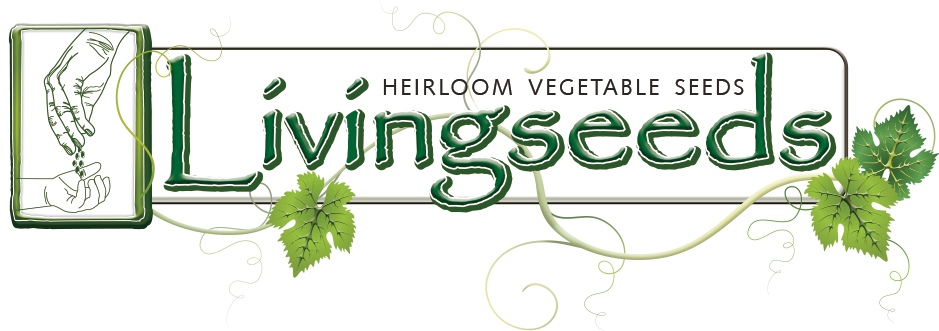Seed Germination
Many gardeners struggle with planting seeds and often just take the approach that scattering a packet of seeds into the soil is good enough.
This is possibly the worst way to go about planting your heirloom seeds. Below are a few handy tips and ideas to help you with seed germination.
We often hear of gardeners complaining about poor germination, unfortunately a lot of the time the issue is directly related to how the seeds are treated by the gardener. To kill off a seedling or newly germinated seed takes very little effort and sometimes only a matter of just one hour where the soil was too dry or the environment too hot.
Here is a brief rundown of general seed germination instructions. This should give you a basic understanding of seed germination techniques, and enable you to get the best germination from the seed that you have purchased from Livingseeds.
General rules on germinating seeds.
1) Crops that grow underground should not be started in seed trays. Always sow these directly where they are to grow. The seed can be thinned out with flour, river sand or pool filter sand to help you attain a better spread.
2) Most crops that that bear their crop or fruit above ground can be started in seed trays. (e.g. Tomatoes, pumpkins, cabbage, peppers etc)
3) Using some form of specialist plugs / pots or seed trays will always give the best germination as opposed to direct sowing. The difference could be as much as 90% in germination. It is well worth the time and investment to do it correctly.
4) Generally, unless otherwise noted on the seed packet. Plant seeds 3 x deeper than they are long.
5) Seeds do NOT like a rich soil to germinate. The
salts and acids in rich soil can actually inhibit germination. A good base mix of
30% each of Coir, Vermicasts and Vermiculite. From there you can add things
like rock dust, perlite and compost or manure.
If you can’t make your own mix then buy a Germination Mix from a reputable
nursery. Note that Seedling mix is not suitable for germinating seed. Once the
seedlings are big enough, they can be transplanted into a seedling mix if you
are not yet ready to plant them out.
6) There is a fine balance between too fine and too coarse. Too fine and the seed suffocates, yes the seed needs oxygen. Too coarse and it dries out too quickly.
7) If you are starting seeds in mid-winter or early spring, try to either position the cell trays in a warm spot (north facing window) or use a small heating pad to apply bottom heat.
8) Permanently wet conditions can lead to ‘damping off’ of the seedlings, it is always good to have moist but not wet soil.
9) We find that a hessian sheet greatly improves germination in seedling trays as the trays are watered through the hessian, the hessian prevents you from washing tiny seed out of the cells and it also keeps the soil moist for longer. Make sure you remove the hessian as soon as the seedlings poke through the soil. If the seedlings grow through the hessian you will literally pull the plants out when you lift the hessian.
10)The hessian sheet trick is fantastic for starting carrot seed off in the soil. As the seed needs to be planted shallowly, and can dry out very quickly leading to sparse or patchy germination.
11) Another method that I have seen work (we don’t use it as we have thousands of seedlings growing) is to put the seedling tray into a plastic bag, blow the bag up and place in a warm spot like a north facing window or above the fridge to help with germination.
Please see our Seedling Treatment page for more information
